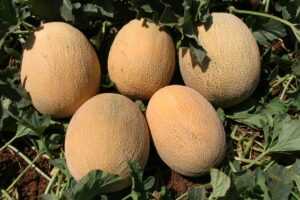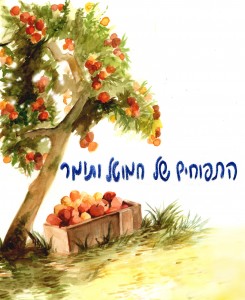 Eliezer and Rose of Shorshei Zion have prepared beautiful packages for their excellent chocolate bars.
Eliezer and Rose of Shorshei Zion have prepared beautiful packages for their excellent chocolate bars.
They have also reduced their sizes, and reduced the price accordingly. Shorshei Zion chocolate bars contain 75% organic raw cocoa melted at a low temperature, making it an ideal source of magnesium, and sweetened with unprocessed cane sugar. Healthy and delicious! Check out these chocolate delicacies on our order system, available in six distinctive flavors: natural, ginger and turmeric, coffee, Mexican chili, orange and raspberry.
It’s the Moment We Have All Been Waiting For:
Tomer and Hamutal’s famous apple cider vinegar is back in town!
After a long, patient (until we became impatient!) wait as it took its sweet time to ferment and sour, this absolutely amazing product has returned to us at last!
If you haven’t yet experienced this absolutely remarkable natural vinegar prepared by Tomer and Hamutal from surplus apples of the Tzuba orchards, join the crowd rushing to order it via the Chubeza order system! You’re in for a treat………….
_____________________________________________________________
What a Melon!
Last Wednesday, as we were packing your boxes, rain started pouring in our field. The raindrops pelting on our tin roof made a tumultuous roar and for almost half an hour we felt that winter had returned. Of course, an hour later the skies cleared up, and two days later came the Return of the Heatwave, reminding us that this is indeed the middle of June. So confusing. And yet, most of the vegetables now growing in the field and adorning your boxes are fluent “summer” speakers: squash, fakus, various pumpkins, melons, eggplant, garlic, cherry tomatoes, first stalks of corn (!), and making their debut in this week’s boxes: watermelon and Thai yard-long beans.
Meanwhile, at Chubeza we remain vegetable-growing farmers, though for a minute or two we considered planting a small fruit orchard. We have since reconsidered, opting to remain close to the earth, and compensate you with fruit boxes from various organic orchards cultivated by other farmers throughout the country.
And yet, we are very pleased to claim the glory of a couple of fruits that have become regulars in our summer boxes, because they grow calmly across the open field, not on a tree or bush. They are, of course, the melon and watermelon. Of the two, the melon precedes his tough brother, so he rates the first Newsletter spotlight.
The melon is a member of the Cucurbitaceae family, a prominent summer clan whose relatives include the squash and pumpkin, cucumbers and fakus. As for the latter, although it pretends to be a cucumber, the fakus is really a melon harvested before it had time to ripen (and to all of you who still think we’re sending you two bags of squash, kindly take a second look at the recent Fakus Newsletter). Which is fortuitous indeed, for unlike his melons brothers, the fakus will not get sweeter as he ages. But the melons will! As they advance towards ripening, the sugar level in the fruit increases. At that point, they unfortunately become desirable not only to us, but also to the birds and mice, who are very good at detecting a ripe and juicy melon and fight to have their share.
We attempt to get the melons into the field as early as possible. Some are seeded; others are planted to gain more time and fewer weeds. We seeded and planted the first round of melons in March, right after their relatives the cucumbers, fakus, pumpkins and squash went into the earth. After them came more rounds, so we can extend the harvest for as long as possible.
At the beginning of the melon’s life, we cover its bed with a thin, white cloth called “agril,” allowing the plant to serenely grow, protecting it from viruses and other insect-borne diseases. Once the plant begins blossoming, we remove the white veil and allow the bashful bride to confront the outside world. Despite the many dangers, there is also the anticipated rendezvous with pollinating insects, without which we would have no pollination, fertilization or sweet fruit.
It takes the first melons slightly less than two months to begin winking at us from their beds in their roly-poly manner. Several weeks later, they begin changing their colors, softening a little inside, filling up with sweet juice and becoming easily detached from their plant. Melons begin ripening some 30 days after they blossom, when the sugar levels and pH are on the rise. The sugars that make up the mass of the fruit are fructose, glucose and sucrose, accompanied by 90% water. We strive to harvest melons at the prime of their ripeness, after their sugar level has reached its peak and they are sweet and juicy. Prematurely-picked melons will become juicier and softer in time, but they will not be as yummy and sweet. Melons have no reserve of carbohydrates. Actually, most of the carbs within them are sugars, not starch, which is why they have nothing to convert into sugar if they are harvested. What you pick is what there is.
And thus, over the years various methods to determine the ripeness of the fruit have been developed. Some ways are more scientific, such as the refractometer, a tool that measures the levels of sugar and NMRI (Nuclear Magnetic Resonance Imaging.) But we simple farmers just bend down and inhale (mmm… it smells like a ripe fruit), take a close look (and the color has changed from green to yellow), caress it (press on the base of the fruit, where the flower once grew) and give it a little tug (if it detaches easily, great; if not, it needs some more time on the vine). We then carefully roll the melon to the long piles at the side of the bed. Later we stroll through with our wheelbarrow to collect the melons to the end of the bed, where we will place them into low boxes (they do not like being stacked in piles) and bring them to the packing house to savor their intoxicating scents.
This year we grew two melons of the Ananas specie: one long, elliptical and juicy with a very prominent hometown heritage, developed from the local baladi melon that has grown in Israel for many, many years. The local farmers termed it Shamam (melon in Arabic), or sometimes Batichi Aspar (yellow watermelon, named after its cousin). The two types we grow are “Raymond” – with light creamy flesh, and the “Hudson” – bright orange on the inside. The former ripens early and therefore is suitable for the beginning of the season, while the latter ripens late and is thus appropriate for the middle and end of season. The first melons were already delivered to you several weeks ago. Of the later bloomers, some were seeded and planted as recently as May, and they are already beginning to ripen.

Melon history begins in Africa, where there are still many wild varieties. It is unknown when, where and how they were cultivated, but somehow the farmers of an ancient era selected and saved the seeds of the sweetest melons. Melons were abundant in Egypt over 4000 years ago, and after many epochs travelled on commercial routes to Turkey, Iran, Afghanistan, India, South-Central Russia, China and Japan. Melons are depicted in ancient art, including a 2,400-year-old Egyptian burial drawing. In the Gilgamesh Epic written over 2000 years ago, Gilgamesh is mentioned eating aromatic melons. The fruit arrived to Europe sometime around the Greek and Roman period after the ruling Moors brought them from North Africa to Spain. Here in Israel, melon is mentioned in the Mishna under the name melafefon (cucumber)… Melons back then were very small compared to today’s varieties, probably about the size of an orange.
You can read about the history of melons in Israel, various species and surprising recipes in this nice article (Hebrew) written by chef and author Ofri Zuta. Different cultures feast on melons in different ways: in the Far East they are cooked and eaten like other cooked vegetables, but these are a different variety than the sweet melons we know. One of the Oriental types is the Chukiang melon, grown from Thailand to South China. This type of melon is pickled and preserved for months. In the Middle East, Central and South America and China, their dried seeds are eaten as a snack. In Mexico, a refreshing, melon cooler called agua fresca is a popular summer drink. In Japan, they make a different drink called midouri, a very sweet and heavy melon liqueur produced by soaking the melons in alcohol for a month (!). Even in our familiar way of eating the melon raw, there are many variations in seasoning: salt, pepper, powdered ginger or lemon juice.
Alchemists of the Middle Ages claimed that melon encourages blood circulation, and is useful for soothing heated tempers. It is said to ease the pain of kidney stones and clear the way for their discharge. In Chinese medicine, melon is considered a cold food which influences the heart and stomach, encouraging urination, easing constipation, helping fight liver diseases, soothes a cough, lowers body temperature and quenches thirst. It is highly recommended to eat melon separately, as its own little meal.
From a nutritional viewpoint, melon is rich in Vitamin C. Half a melon contains 117 mg, almost twice the recommended daily consumption. It is also rich in Vitamin A and beta carotene, both of which are antioxidants that help protect the cells against harmful free radicals. In addition, half a melon contains 853 mg of potassium (almost double the amount of a banana), which is helpful in reducing blood pressure and easing muscle pain.
How to Store a Melon
- A ripe melon can keep for two weeks if refrigerated
- Melons are sensitiveto the ethylene gas emitted from ripe fruit, making it rot from a fellow melon’s gas or that of other fruit. If you have a bunch of melons you wish to eat over time, place them in an open area, storing only the softer ones. Do not place them alongside apples.
Wishing us all a sweet week full of good, thirst-quenching freshness and juice.
Alon, Bat Ami, Dror, Yochai and the Chubeza team
___________________________________________________
WHAT’S JOINING THE MELONS IN THIS WEEK’S BOXES?
Monday: Melon/watermelon, butternut squash/acorn squash/Amoro, lettuce, cucumbers + fakkus, beets, tomatoes, potatoes, New Zealand spinach/Swiss chard, zucchini, parsley/coriander. Small boxes only: leeks/garlic.
Large box, in addition: Onions/eggplant, Napolitano pumpkin, cherry tomatoes/Thai yard-long beans, corn.
FRUIT BOXES: Bananas, nectarines, avocado, apples.
Wednesday: Melon/watermelon, butternut squash/Napolitano pumpkin, lettuce, cucumbers, tomatoes, potatoes, zucchini, parsley/coriander, leeks/garlic, cherry tomatoes/Thai yard-long beans, corn.
Large box, in addition: Onions/eggplant/fakkus, Amoro/acorn squash, New Zealand spinach/Swiss chard.
FRUIT BOXES: Bananas, grapes, mango, apples.

